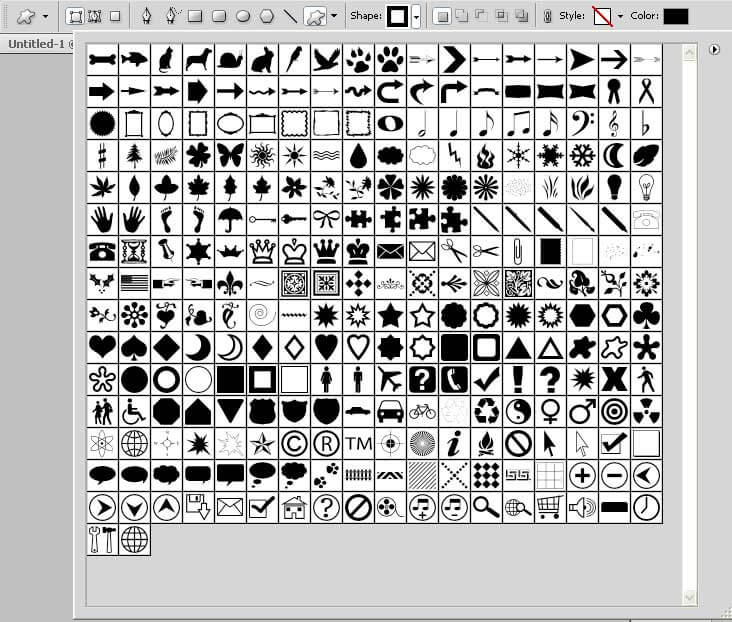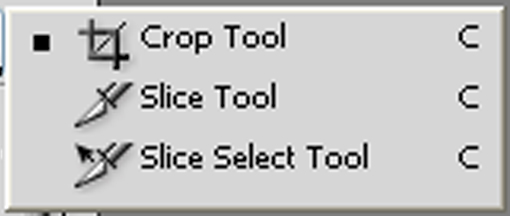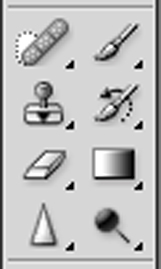Updated August 25, 2023
Adobe Photoshop
Adobe is the world’s unprecedented creative and multimedia software tycoon. And for Adobe, Photoshop is the flagship project that redefined how images are edited and treated. Over that, it revolutionized the graphic designing vertical, which further inspired millions of artists worldwide.
Over the years, Photoshop developed from a small photo editing tool to an Industry-leading software that dictates the global graphic designing and multimedia industries. With every new version, Adobe introduces in Photoshop; the graphic designing communities wait to check out the next big leap that Photoshop can take them.
No matter how many versions and whatever new feature Adobe may introduce with Photoshop, few tools were tested with time and remained sturdy and highly important in the development chronicles. They define the importance of Photoshop and cope with changes in the technological world. Designers love to work on these tools, regardless of how they use them in correcting images or designing a brochure, website, or even a mobile application. The list of top ten tools and features is proven as the best of Photoshop.
Top 10 Powerful Editing Adobe Photoshop
#1 – Adobe Photoshop – Layers
So, how did Photoshop replace commercial paints and take over the Industry overnight? Developers beefed up the advantage of software-based design with the layers palette. It gives the artist the power to control everything he works on in the document.
With the Layers palette, you can independently draw or design various document elements in layers and stack them per the display order. With this advantage, control over every single object is catered at the click of a mouse. Mistakes happen, but the effects of the mistake are limited to the part of the canvas; you can choose to work on the particular part and leave the rest of the canvas as it is. This benefit is lacking in the traditional painting method. Artists cannot relax at any part of the drawing or painting once their concentration is diverted and a painting stroke goes wrong! They are bound to change the whole canvas.
Apart from the above merits, a layers palette has grown into a dominating feature along with Photoshop in these years. It comes with layer masks, blending modes, opacity, fill, lock, group, and many other options that add more value to the Layer palette. Without the Layers palette, the control of Photoshop cannot be imagined today.
#2 – Adobe Photoshop – Selection Tools
Photoshop’s selection tools are so handy that designers worldwide are addicted to the set of selection tools Photoshop offers. However, many competitive and open-source software are designed to give tough competition for Photoshop. Users are still stuck with Adobe’s torch bearer software due to the ease its tools provide.
Selection tools make life easy for photographers, Graphic designers, and every multimedia professional. The precision of selection has been improved over the years, and the detail we obtain is fabulous.
The Marquee selection tools
Magic Wand selection that uses pixel color sample and controls the range of color through tolerance
The Lasso tools that manually use pixel color and a hands-free selection process are intended to serve various industries’ purposes depending on their workflows.
In recent years, Photoshop proved successful in creating selection tools that can easily select furry animals or hair. Over time, designing communities expect Photoshop to improve the selection tools to help designers catch up with the demanding speed.
#3 – Adobe Photoshop – Pen tool
When we look back on when multimedia software is shipped without a pen tool, we remember the software is nothing more than a bunch of color palettes. There isn’t much to do, and the creative ability is uninspiring.
Today, Photoshop cannot be imagined without a Pen tool. Though the pen tool, by nature, works for drawing paths along with the anchor points, the creative scope it provides is limitless. The tool is designed so flexibly that the designer can draw any shape or edit the existing shapes with his bare hand. The amount of control we have through placing the anchor points in the right places is taken further with the three types of Anchor points that allow you to draw and edit paths precisely.
#4 – Adobe Photoshop – Shapes
In raster-based graphic design software like Photoshop, working on an object without losing its original quality is a boon for the designers. Photoshop’s shape layer does the job for us.
The outlook of the shape layers in Photoshop may be limited, but the feature’s capabilities go a step further than what we assume about it. In the traditional marquee selection tools, the selection is limited to the raster process. In many cases, the output will result in sharp pixilated edges, which are never good-looking. But the shape layers can act as individual objects within the document with the attribute of maintaining the finest quality.
A shape layer can be easily edited with the help of a pen tool or a direct selection tool and still retain its original quality. The colors inside the path can be changed anytime, and shape layers can also hold gradients and many other effects.
#5 – Adobe Photoshop – Vector Mask
Another feature that stood at the time and lived on the top was the layer masking tool. Though many other tools were introduced after the layer mask, the tool preserved its importance.
The layer masks create a masking portion of an object using the grayscale color combination (Shades of Gray). Once the masking part is done, the area of the object under the layer mask disappears.
A layer mask may look like a dry and non-responsive subject for freshers. But, once the subject is grasped and they start using the black and white colors within the masking layer thumbnail, they enjoy its ease.
- There are many ways layer masks can be controlled.
- The user can directly fill in the colors to mask the intended area of the object.
- It is possible to draw the masking color with the help of brush tools to gain manual control.
- A single-colored gradient mask can also be applied for a smooth transition effect.
- Users can also play with the erase tool to control the fill color.
In recent versions of Photoshop, people have further powered layer masks with the control of feathering, contrast, and density.
#6 – Adobe Photoshop – Slice Tool
In the late years of the last century, when the world was slowly shifting towards web technology, Photoshop quickly understood the need to bring a tool that helps web designers, companies, and users access a website quickly and effectively.
In an age of telephone dial-ups, there are no broad bands or Wi-Fi connections, and a homepage used to take ten minutes to load. Adobe introduced a slice tool to snip images into slices so that people could mitigate the loading time of a website to a greater extent. The tool helped the designers greatly and was one of the important milestones in developing web technology.
Later, people upload the slices in Adobe Dreamweaver or HTML to the websites. Though high-end broadband connections and HTML and CSS rule the web markets, the Slice tool remains important in the web world.
#7 – Adobe Photoshop – Retouching Tools
As the name suggests, Photoshop intends to edit raster images, and people mostly use it to correct images in the initial stages. As the tides of change hit the technological world, Photoshop has extended to every industry, including Print, 3D, The Web, and many more. But the name remains the same as Photoshop.
The photo editing tools developed over time have become important in graphic design and photography.
Retouching tools are an accumulation of tools such as the Stamp, Pattern Stamp, Spot Healing, Healing, Patch, Redeye, and more. Though the numbers are more, every tool has its importance. The development of retouching tools did not happen overnight. Adobe was working hard to identify the problems of the photographers and find the solutions for the problems from time to time.
The tools proved highly helpful for the lasting problems that are facing photographers. Tools like Redeye, patch tools, and healing tools were so handy for graphic designers and photographers that they brought down the manual work by almost a hundred percent. One could manage the manual work, carefully done for a long time, with a click and drag.
#8 – Adobe Photoshop – Photoshop 3D
Photoshop’s quick adaptability to changing technologies makes it the world’s number one multimedia and Graphic designing product. Adobe has proved this time and time again in the last two decades.
When Adobe understood the world was moving towards web technology, they quickly found solutions badly needed for the web industry. The 3D Industry experienced a boom recently, and Adobe found the right spot.
Before the introduction of the 3D feature in Photoshop, creating and drawing textures was a herculean process that designers must go through at every step. With Photoshop 3D, users can directly import 3 Dimensional objects into Photoshop through the cloud program and draw the textures directly on the canvas. You can even play the series of images related to the 3D object and choose the pose and facial expression from the animation within Photoshop.
It is possible to create 3-Dimensional objects within Photoshop and texture them on the same layout in recent versions.
#9 – Adobe Photoshop – Smart Objects
Though Photoshop is making great changes in multimedia, there are always some limitations for everybody. The raster file pixelation is one of the major drawbacks Photoshop has been trying to solve for a long time.
Adobe Illustrator is very famous for its un-destructible quality through vector graphics. However, as in Photoshop, vector graphics are limited without highly detailed images. But, images are randomly losing quality as they are resized. Users must be very conscious of the photographs and raster images they use in their documents. Resizing a smaller image to a larger size compromises the quality.
Smart objects come to the rescue of raster files, and it offers more than just preserving the data. They intelligently remember the image file’s data and bring its data back to the original form after resizing the object to any size. Using a smart object helps the designers save time and effort by remembering the changes to the object and applying the same changes to the same object if used anywhere else.
#10 – Adobe Photoshop – Adobe Creative Cloud
Adobe has recently introduced the creative cloud advantage, where users can access the entire empire of Adobe software. While our point of discussion in this part is about Photoshop, I have to limit the advantages of Photoshop within the creative cloud.
Adobe works on updates, additions, and fixes of the software from time to time. Earlier, users had to wait almost two years to check the latest version’s updates. With Photoshop CC, you can download updates immediately when Adobe releases them without any two-year wait.
Another popular advantage is the cloud. If you are out and not carrying your laptop and want to access the image suddenly from your friend’s laptop! An impossible thought to make before the advent of cloud computing. Now, it is possible to save your file in the Adobe Cloud. Your files are safe, and you can access them without carrying them.
Photoshop has been mesmerizing us for years with incredible design tools. We hope the software will add more feathers to its hat in the coming years. Until then, Photoshop’s top ten features will help designers inspire and deliver more every day.










